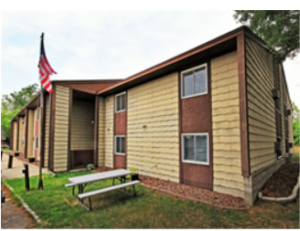Regional equity funds provide a consistent and patient source of capital for housing development. Funds will typically establish goals or conditions for their investments, such as affordability or access to transportation and parks. Regional equity funds can be an important source of “patient capital” for gap financing – long-term, low-interest financing that reduces the pressure on developers to produce immediate financial returns. This helps developers offer lower home prices and rents.
Equity funds may consist of a variety of funds, but often use a blend of private investors, foundations/non-profits, endowments, and public funding sources to reduce risk to investors. In this role, equity funds can also act as tax credit syndicators for affordable housing developments by raising funds from investors and connecting those funds to developers that are utilizing tax credits. This helps ensure that developers have access to tax syndicator options, as regional equity funds have a vested interest in delivering housing construction in their service areas (as opposed to national tax syndicators who are increasingly focused on large urban areas).
A regional equity fund for the greater Upper Valley region could be developed through a partnership of anchor institutions and private investors with a vested interest in the region, such as Dartmouth-Hitchcock Medical Center, Dartmouth College, and other large or mid-size employers. By creating an equity fund that is focused on the region, investments can made more confidently using local knowledge. This can help persuade developers of low-end market rate housing to undertake projects in the region.
Case Study: Healthy Neighborhoods Equity Fund (Massachusetts)
The Healthy Neighborhoods Equity Fund (HNEF) aims to build healthier communities through targeted investments in housing. HNEF targets investments in areas that meet conditions, such as “walkability” and access to parks, that are shown to both be beneficial for quality of life and real estate investment. This helps ensure positive outcomes for future residents and attracts private investment into the fund. A key component of HNEF is the use of a 10-year investment term with no carried interest, which reduces the pressure on developers to generate high financial returns in the short-term. A blend of private, foundation, and public funds reduces risk to investors.
Case Study: Minnesota Equity Fund
The Minnesota Equity Fund (MEF) is a subsidiary of the Greater Minnesota Housing Fund. MEF invests in a variety of housing types in both rural and urban areas, including mixed-income housing, low-income senior housing, and homes with supportive services for populations in need. In addition to development of new affordable homes, MEF also sponsors rehabilitation of existing homes to ensure long-term affordability.
MEF operates as a tax-credit syndicator for regions in Minnesota where large, national syndicators have been inactive in recent years. This helps locally-active developers access financing for affordable housing development.


